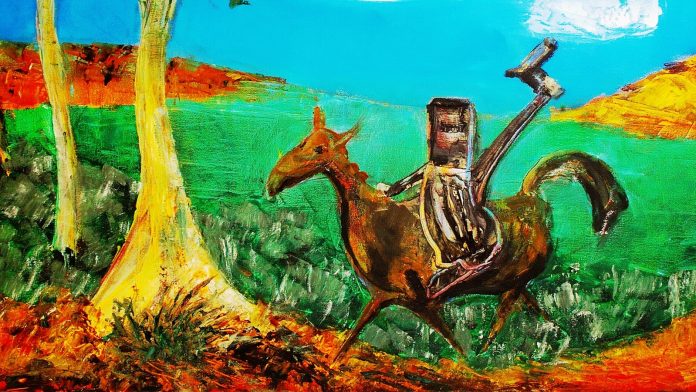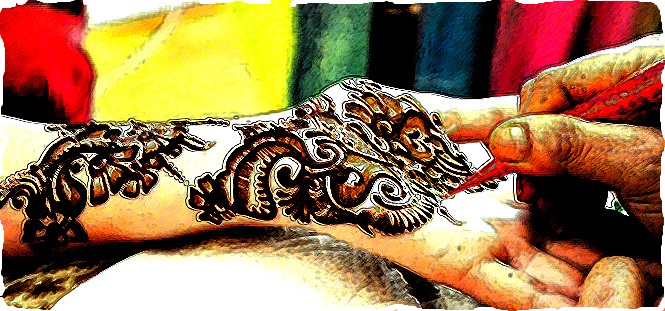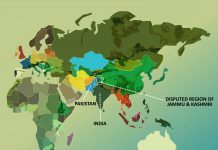The term ‘cultural sphere‘ can be used in different contexts. At the core of the idea is the notion that a culture can be shared between people living in a clearly demarcated territory. There are three ingredients that I would like to explore in this article, ‘culture‘, ‘ethnolinguisticgroup‘ and ‘region‘. These three ingredients are vital to identifying a ‘cultural sphere’ that can and does cut across nation states and continents with little respect for man-made territorial ‘borders’. Some cultural spheres are so small that they are restricted in their geographic coverage within nation states or sub-divisions within a nation state.
Cultural spheres can also be defined through “geographical, political, economic, legal and religious, cultural, linguistic and artistic characteristics”. This is a much wider sense of the term than the one I’m using for the purpose of my discussion. It is nonetheless an important way of categorising populations or systems around the world that have a core-identity, or set of principles peculiar to particular peoples. For some people, these core identities are more important than other aspects of their identity, whilst for others they are merely peripheral if not incidental.
Whatever the criteria, cultural spheres are important to help us understand and analyse the intensive exchanges between the people of each respective sphere giving shape to perceptions of a common identity and a shared past, sometimes mythic and overtly political in actual priorities.
Various Criteria
To illustrate some of these spheres let me turn to religion first. Obvious examples that come to my mind would be to cite the Muslim-sphere (the ‘Ummah‘), the Christian-sphere (Christendom), the Jewish-sphere (Jewish Diaspora/World Jewry), the Buddhist-sphere and the Hindu-sphere (‘Hindutva’). This list is not intended to be exhaustive.
These broad spheres can be subsumed within other spheres. When broken down to their sum-parts, we can also speak of sectarian differences on a macro-scale as in the Catholic-sphere; the Protestant-sphere; Sunni-sphere; Shia-sphere – you should get the point. We can even speak of past configurations that are no longer that relevant especially in the case of the Latin Church, Eastern Orthodoxy and through which we can also discover how notions of a European identity first emerged.
Geographical-spheres, for their part comprise of ‘North America’, ‘Middle America’, ‘South America’, ‘Europe’, ‘Russia’, ‘North Africa’, ‘Sub-Saharan Africa’, ‘the Middle East’, ‘Central Asia’, ‘East Asia’, ‘South East Asia’, ‘Australia’ and the ‘Pacific’. Related to geographical-spheres are political-spheres although the two should not be confused as one and the same but what comes to mind is the ‘Free World’, ‘the Communist World’, ‘the Muslim World’, the ‘Arab World’ etc.
Spheres can and do become redundant, vastly reduced, enlarged and even irrelevant.
Linguistic spheres include the Arab world (which can also be categorised as a political-sphere), the Anglosphere (English-speaking countries with ‘ancestries’ linked to England), ‘Turan’ or Pan-Turkism (the Turkic speaking world), North India (Indo-European or ‘Indic’ India), South India (Dravidian India) – again this is not an exhaustive list.
Economic-spheres comprise of the ‘First World’, ‘the Developing world’, with further internal distinctions as in the case of the ‘European Economic Area’, ‘the ASEAN Free Trade Area’ etc. Economic spheres can emerge because of older solidarities based on perceptions of some shared history that would make trade between related ‘nations’ more easier.
Ethnic-cum-linguistic spheres (not to be confused with ethnic and linguistic groups) are a lot more complicated than the other other cultural-spheres. But on the basis of broad criteria to give some continuity to older identities – even when projected – we can include the ‘Germanic-sphere’, ‘the Celtic-sphere’, ‘the Indo-Aryan sphere’, ‘the Indo-Iranian sphere’, ‘the Sino-Tibetan sphere’, ‘the Semitic-sphere’, ‘the Turkic sphere’ etc. In this respect, we are not speaking of ethnicity in the modern sense of applying it to one or another ‘group’, but rather going back in time to see how and from where modern ethnic groups emerged. The actual pool modern ethnic groups derive from is quite small and the majority of ethnic groups share the same origin.
In terms of modern ethnic and linguistic groups – the list is truly exhaustive as new ethnic groups emerge all the time. We can include in this list, Albanian, Arab, Berber, Bosniak, Catalan, Dari, Dogra, English, French, German, Greek, Gujarati, Han-Chinese, Hutu, Italian, Irish, Kashmiri, Kurd, Malay, Persian, Punjabi (‘Majhi‘), Pahari, Pashtun, Serb, Slovak, Swede, Tajik, Tamil, Thai, Tutsi, Uyghur, Welsh, Yoruba, Zulu etc., etc. These ethnic and linguistic identities are not self-sustaining and there is considerable internal cleavage, contestation and debate about what constitutes an ethnic group. Why there is such fractures is usually on account of the politics of division and separatism.
To these spheres, we can add lesser known spheres based on ideas of legal norms shared between various peoples. We have the common law system, the civil law system and legal systems based on religion, most notably Islamic law or ‘Sharia’. These are value-based systems. Wherever these systems originated and however vast their jurisdictions, they impact how societies are governed and how individual members perceive themselves especially in relation to others. Although they do not correspond with ascribed identities per se, they do however impact how those identities are perceived, shaped and expressed.
In every example given from the various cultural spheres, it shouldn’t be difficult to now understand the complex nature of identity formation. We should also understand how simplistic common perceptions are about such identities in the broadest sense, skewed perceptions that so many of us take for granted and never question.
Often times we speak of these identities through false paradigms because of an inadequate understanding of the complexity that characterises the cultural spheres. For example we can speak of the ‘Middle East’ as a political construct, whether as a geographical or political region whatever the obvious problems associated with such definitions, but it’s actually wrong to speak of ‘Middle Eastern’ people as an ‘ethnic’ or ‘racial’ people. To describe someone as ‘Middle Eastern looking’ is simply vacuous and meaningless for the obvious reason that the sum-parts do not come together to give coherence. ‘Yemenis’ and Syrians, Afghanis and Egyptians, European Turks and Saudis all have physiognomies so radically diverse that it would be absurd to attempt to lump all diverse peoples into an arbitrary category. The only factual remark that could be made in light of such diversity is to say that we are dealing with human beings, who all belong to one species – the human species. That would be the scientific observation. But, yet we would frequently hear the remarks that someone looks ‘Middle Eastern’? This is analogous to claims that someone is ‘Arab’ looking or ‘South Asian’ looking, claims that are so absurd given the internal heterogeneity of the people in question that it would be a mark of ignorance had such claims lacked popular appeal. And yet these remarks can be heard everywhere, on the media, in law courts, government institutions and on the street.
And so in enumerating the different criteria that can be used to understand cultural spheres, I hope to have shown that identity-formation is not a simple and straightforward affair. It almost always hinges on variables so complex and varied that the inevitable product is mired in controversy. Thus nothing should be taken for granted whenever we hear the labels of corresponding identities being thrown about. Where you have a people disputing claims of an ‘ascribed’ identity, we should always look to the background and context of the contestation to understand and appreciate what is really happening. In this respect, the individual labels are loaded with values, insights and experiences that on first encounter may simply be ignored or not register with someone unfamiliar with the wider issues at hand.
For British-Paharis, being able to understand this complex terrain, will allow them to better navigate their experiences and encounters in Britain on the basis of an illusory identity that somehow connects them with Pakistan, whilst the people of ‘Azad’ Jammu & Kashmir get nothing in return.
















